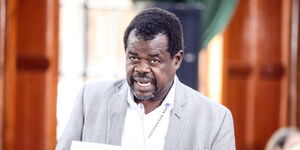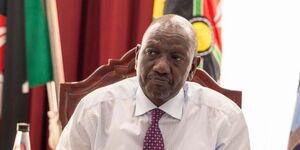The country's largest power lender, Kenya Power has warned of an increased number of national blackouts as it grapples with regional power shortages.
This year, the country has faced an increasing number of national power blackouts and this looks set to continue as Kenya’s growing independence on imported electricity from Ethiopia, Uganda, and Tanzania brings a risk of load shedding.
This, according to Kenya Power CEO Joseph Siror, means that the countries we rely on for power are set to focus on their own needs. “Letting a very critical part of your country be controlled by an outsider is not something you want,” the CEO noted. “If their hydro goes down, the first they disconnect is not themselves- it is us. It is a delicate environment.”
Although the power imports make up a small portion of Kenya’s total electricity usage, it is crucial in stabilizing the grid, especially when intermittent sources like wind and solar cannot fill the void left by reduced hydro generation during droughts.
All three countries exporting power to Kenya rely on hydropower generation, given their massive capacity compared to Nairobi. “Last year, Ethiopia could not supply the contracted capacity because their hydrology was low. We had to load shed the country by 280MW,” Siror intimated.
The load-shedding threats are traced back to a moratorium on new generation capacity imposed in April 2021 by the administration of former president Uhuru Kenyatta. At that time, 92 projects totalling 2,345MW were canceled over their expensive terms that would have been passed to end consumers.
Although President William Ruto’s cabinet lifted the moratorium in February 2023, parliamentary delays have prevented Kenya Power from contracting new suppliers to bridge the electricity gap.
“The Ministry of Energy and Petroleum continues to seek the intervention of parliament on lifting the moratorium on signing of new PPAs and renewal of those set to expire. As an economy, we cannot grow without power,” noted Alex Wachira, Principal Secretary for the Ministry of Energy and Petroleum.
Dig Deeper: Kenya buys 200MW from Ethiopia through a 25-year power purchase agreement (PPA). There is also an option to gradually increase this amount in 2026. The local power lender had hoped to double Ethiopia’s electricity imports by the end of this year but these plans have seemingly been dropped.
Kenya also has an exchange agreement with Uganda and Tanzania that allows either side access to extra power during shortfalls and emergencies. Tanzania-Kenya power trade is yet to begin following the delayed commissioning of the Isinya-Suswa 400kV transmission line that will be connected to the Ethiopia-Kenya line to form part of the Eastern Africa Electricity Highway project.
Rising power demand from expanding economic activity is straining Kenya’s national grid, with reserve electricity margins – the buffer between available capacity and peak demand – reaching critical lows.
Electricity reserves often act as a safety net or backup in case of unexpected loss of generation. Currently, Kenya’s peak demand stands in the region of 2,242MW against an available capacity of 2,320MW, reflecting a margin of 3.4 per cent against the required 15 per cent.
The thin reserve margin highlights an urgent need for expanded capacity to meet rising demand and avoid potential power disruptions that could impact economic growth. Increased grid connections through last-mile projects have also triggered the need for additional generation.
Bigger picture: As a stopgap measure, Kenya is looking to complete new power projects by 2027 through the country’s primary power producer.
The expansion plans with Olkaria VI and VII geothermal projects, expected to add approximately 220MW cumulatively upon completion, are a key part of the strategy to boost reserves and stabilize the power supply. Two international companies are expected to contribute 35MW each from geothermal projects at Menengai by September 2026.
“These four projects, with a combined 290MW capacity, are short-term solutions and inadequate to fully bridge the thin reserve. A large spinning reserve of at least 310MW is required,” noted the CEO.












